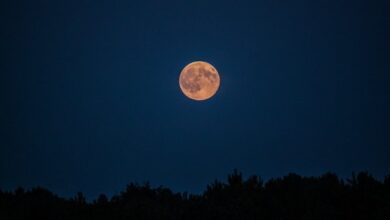Drip irrigation: What flow rate and distance between drippers should I use?
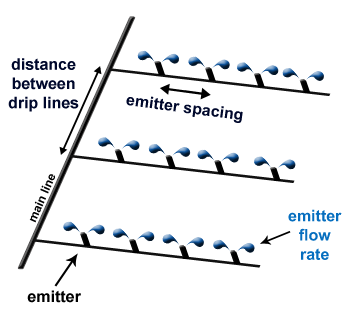
One of the most frequently asked questions about assembling an irrigation system is what should be the distance between drippers or emitters and what water flow should be used for irrigation. In today’s post we will talk about these two essential aspects for the design of a drip irrigation installation.
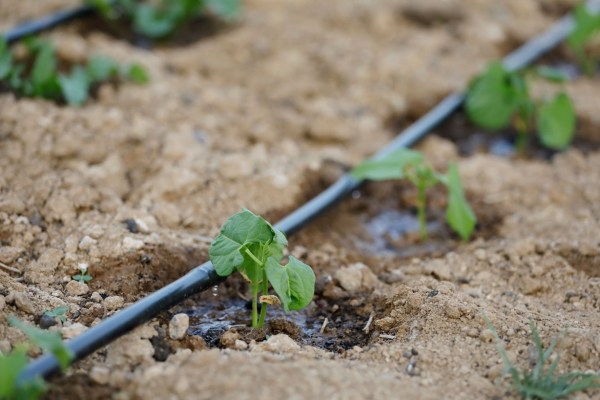
Drip irrigation is one of the most efficient and most comfortable garden irrigation systems out there. Among the advantages of drip irrigation is its versatility (the distance between drippers can be adjusted depending on the size and distance between plants) or the water savings it entails (no losses due to evaporation or runoff), but there are many other benefits of irrigating drop by drop.
In the post Drip irrigation: What it is and how it works. Types of drip irrigation and advantages We saw how to install a homemade drip irrigation and what are the types of localized irrigation (it is not the same to water a flowerpot garden, a terraced garden or a garden with fruit trees…).
How to Design a Drip Irrigation System
The objective of a good design of the irrigation system is to satisfy the water needs of the crop to ensure that a good harvest will be obtained, minimizing water consumption and installation costs. For this, it is essential to know the length of the irrigation pipes, the number of drippers needed and the flow rate of the drippers.
The number of drippers for drip irrigation and the separation between them depends, among other things, on the type of crop that we want to irrigate. Logically, the water needs of each plant influence, but also the type of soil and the extension and depth of the roots.
It is not the same to water lettuce or garlic, crops with roots that do not take up too much space, than larger vegetables, such as tomatoes and pumpkins, or trees, which have a much deeper root system.

To know how many drippers are needed in a drip irrigation installation, it is important to know what the «wet bulb» looks like. The wet bulb is the volume of soil moistened by a localized irrigation dripper or emitter.
It is important that the wet bulb encompasses all the roots of the plant to ensure that the crop can absorb all the water it needs. If it is not large enough to cover the entire root system, more drippers per plant will have to be placed.
The flow rate of the drippers, the irrigation time and the movement of water in the soil (which depends on the type of soil: sand, clay or loam) determine the shape of the wet bulb, which varies its size and depth depending on these factors..
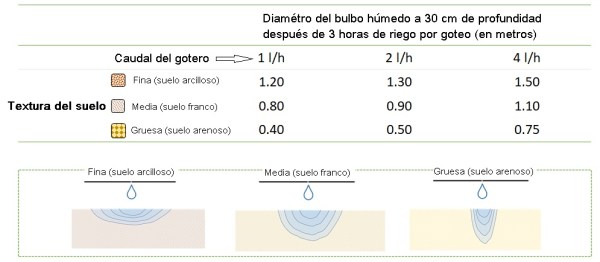
In heavy or clay soils, the infiltration rate is lower than in light or sandy soils, which means that the puddle that forms around the dripper is larger and the bulb extends more horizontally than in depth. If the same amount of water is applied to three soils with different textures, the shape of the bulb will vary as shown in the previous image. Similarly, the higher the dripper flow rate, the larger the size of the wet zone in the soil.
Depending on the water requirements of the plants, the texture of the soil and the depth of the roots, the “agronomic design of the irrigation system” is established, determining:
- Flow rate of drippers
- Distance between emitters
- Number of drippers per plant
- Irrigation application time
But… How much water do plants need?
The water needs of crops are determined by a complex calculation that takes into account the climate and the type of crop (*see References section). In addition, they vary throughout the crop cycle, with water needs being higher in the central phase and when temperatures rise.
To avoid making complicated calculations, in the case of home gardens we can estimate the water needs in our area and for each specific crop by doing a field trial in which we add water to the soil and measure the humidity in the area where the plants would grow. roots (different depth in the case of crops with superficial roots or with deep roots).
In the case of vegetables, the objective is that at the depth of the roots the soil is continuously moist, so we can do tests to find out how much irrigation water we need and what the frequency of irrigation will be (with high temperatures, for example, more frequent and shorter irrigations are recommended instead of a single irrigation of longer duration).
As an unwritten rule, we can say that most vegetables need 1 to 3 liters of water per plant per day. This need for water will vary depending on temperature and rainfall. In summer, for example, when it’s hot and it doesn’t rain, you have to water every day, even several times (depending on the crop), while in autumn and spring you can space out the waterings. Keep in mind that, although the differences are not huge, there are vegetables that need more water than others:
- Not very demanding in terms of irrigation water: garlic, onion, chickpeas, lentils or aromatic herbs such as lavender, rosemary, thyme, oregano…
- Medium irrigation: peas, tomatoes, cucumbers, turnips and some aromatic herbs and flowers to drive away insects, such as basil, calendula or marigold.
- Abundant irrigation: Swiss chard, artichoke, celery, courgette, cabbage, leek…
How many drippers are needed to irrigate?
To know how many drip irrigation drippers are needed to irrigate, it is necessary to know the water needs of the crops and adjust the number of emitters based on the flow rate of the drippers and the shape of the wet bulb.
The number of drippers per plant can be reduced if the flow rate of the drippers is higher (thereby saving on installation costs), but also make sure that a sufficient area is wetted in the root zone.
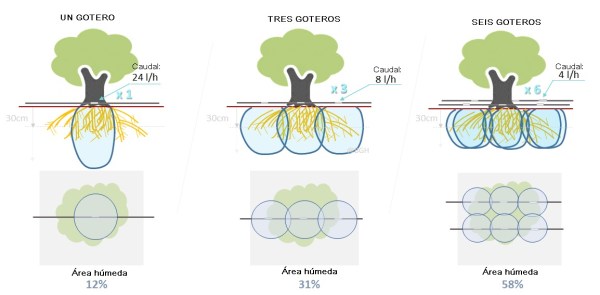
To know the water provided by each dripper, multiply the flow rate of the dripper (in litres/hour) by the irrigation time (in hours). The sum of the water provided by all the emitters or drippers that surround the plant must be equal to the water needs of the crop.
In addition to providing a sufficient amount of water, the moist zone of the soil must reach the entire root system. In the first of the three scenarios above, for example, although the amount of water is the same, a single wet bulb will not cover all the roots, so it would be better to place more drippers with lower flow rates.
To find out if the humid zone is sufficient, the surface allocated to each plant is compared with the horizontal area occupied by the humid zone in the root zone (about 10-15 cm deep in vegetables and 30-35 cm in trees)..
The value of the most appropriate percentage of wet soil is based on the type of crop (fruit trees, vegetables…), the climate and the type of soil. The following values are recommended:
- Wide planting frame fruit trees: 25% – 35%, with a higher percentage the more arid the climate (low rainfall) and the lighter or sandy the soil texture.
- Medium plantation frame crops (distance between plants less than 2.5 meters): from 40% to 60%, varying according to the same relationship as above.
- Crops with a reduced plantation frame (horticultural, flowers and other herbaceous crops): the percentage of wet soil must be between 70% and 90%, and may vary as in the previous cases.
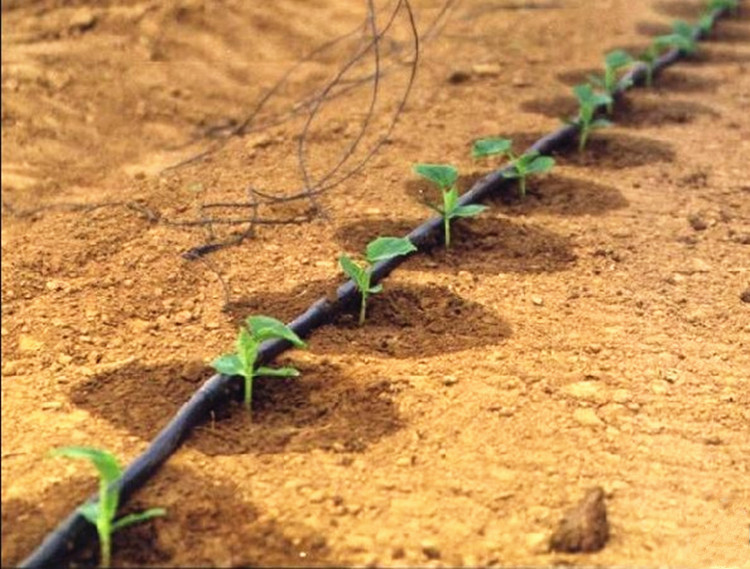
Knowing the distance between plants and the wetted area produced by each emitter (manufacturer’s data for each type of soil or determined by a field test) calculations can be made to know the appropriate number of drippers.
Minimum number of emitters per plant = Cultivation area (m2) x [Minimum percentage of wet area / Wet area produced by the dripper (m2)]
If the planting frame of the orchard is, for example, 15 cm apart between plants and 30 cm apart between rows, the crop area is: 15 cm x 30 cm = 450 cm2 = 0.045 m2. Assuming that we make a daily irrigation that generates under each dripper (at a depth of 15 cm) a wet area of 15 cm x 15 cm = 225 cm2 = 0.0225 m2, then the number of drippers will be: 0.045 x (0.90 / 0.0225) = 1.8 ~ 2 drippers per plant.
Keep in mind that the number of emitters depends on the flow rate of the dripper. If drippers with a higher flow rate are chosen, the wet area will be larger and, therefore, fewer emitters would be needed.
What should be the flow rate of the drippers?
The flow rate of the drippers depends on the emitter and usually varies from 0.5 to 24 liters per hour. To irrigate horticultural plants , low-flow drippers are used (from 0.5 to 4 litres/hour), while drippers for watering ornamental trees or shrubs in gardens have a higher flow rate.
To know what is the appropriate dripper flow rate for our crops, we must take into account the other irrigation parameters (irrigation time and frequency, number of drippers, crop water needs…).
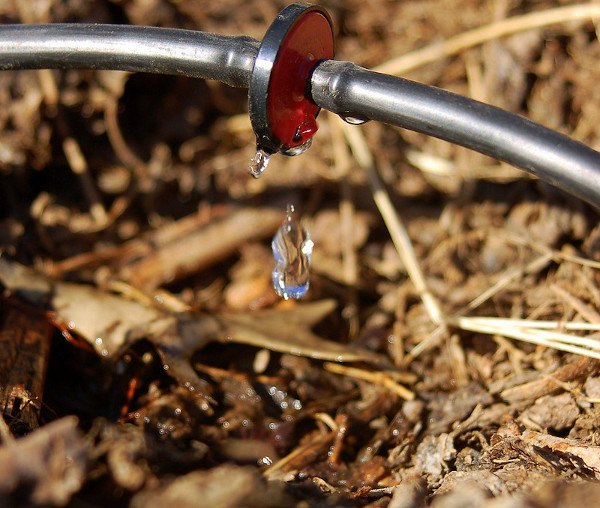
There really is no single «adequate flow rate» to water garden plants, since the necessary flow rate in the drippers depends on the irrigation time, number of drippers, etc.
As we saw above, we can put a few drippers with a large flow rate or opt for a lower dripper flow rate by increasing the irrigation time or the number of drippers. The objective is that the total water that we supply is sufficient to cover the water needs of the crops (in the case of horticultural crops, the objective is to always keep the soil moist in the root zone).
What should be the distance between drippers?
In the case of vegetables, if the distance between plants is not very great and the root system is small, as in the case of lettuce, a single dripper can be placed per plant and the flow rate or irrigation time can be varied depending on of the water needs of the crop.
As we saw in the previous section, the separation or distance between the drippers depends on the planting framework, and the planting distance must be taken into account to design the drip irrigation system and determine how many drippers are needed.
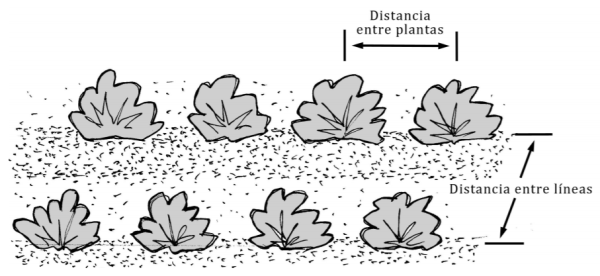
Drip irrigation is very suitable for growing in lines and, in the case of vegetables, several parallel dripper branches are normally arranged (one per line) with a separation between drippers that can be equal to or less than the distance between plants.

Ideally, the wet bulbs produced by the different drippers overlap and the entire crop line is moistened, so for vegetables with larger plantation frames it will be more appropriate to place more drippers (the separation between drippers, in this case, will be less than the distance between plants).
References
- Fuentes Yagüe, JL, 1990. Agronomic Characteristics of Drip Irrigation. Disclosure Sheets, Agricultural Extension Service of the Ministry of Agriculture, Fisheries and Food.
- Martínez Cob, A., 2004. Water needs in horticultural crops. Horticulture Magazine, Vol. 177, p. 34-40.
- Fernández Gómez, R., et al, 2010. Irrigation manual for farmers: module 4. Localized irrigation. Ministry of Agriculture and Fisheries of the Junta de Andalucía, Spain.

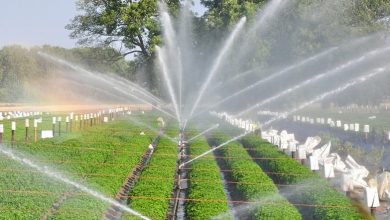
![Photo of Cauliflower Pests and Diseases: [Detection, Causes and Solutions]](https://www.complete-gardening.com/wp-content/uploads/2022/08/cauliflower-pests-and-diseases-detection-causes-and-solutions-390x220.jpg)
![Photo of Complete Guide to Learn to Plant Palm Trees [Step by Step]](https://www.complete-gardening.com/wp-content/uploads/2021/06/como-cultivar-palmeras-390x220.jpg)
